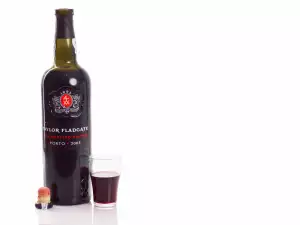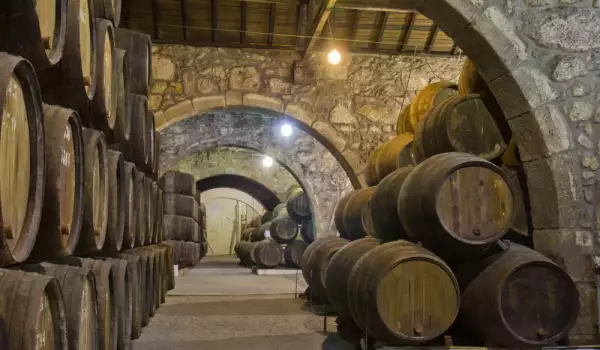Port is a fortified wine, characteristic of Portugal. The drink is also popular under the name port wine. It is made in the northeastern regions of the country, more specifically in the valley of the Douro river. It possesses a golden to caramel color.
History of Port
Port is a wine with a rich history. Its origins are unexpectedly tied with England. The English are fans of French wines but due to the circumstances discovered the charm of Portuguese wines. During the 2nd half of the 17th century, in the Lamego monastery, located about 12.5 mi (20 km) from the town of Porto, a churchman treated some English merchants to a pleasant aromatic red wine, which also happened to be very sweet. The drink was an absolute hit among the guests and they asked about where it came from. Then the churchman revealed the secrets to its qualities. Before the wine ferments completely, wine distillate is added to it.
But the product had to be taken to England without losing any of its charm along the way. That is how they decided to add moderate quantities of brandy to stabilize it. This led to the wine becoming even stronger and sweeter. Interestingly enough, the region where they made the excellent wine also happened to be the 1st classified wine region in the world. Presently the wine is produced in several countries but genuine enthusiasts are categorical that the authentic wine can only come from Northeast Portugal.
Production of Port
Over the years, production of port has experienced slight changes. This is owed predominantly to the development of modern technologies. However, there are winemakers who strive to adhere to tradition. For example, they still mash the fruits with their feet, this process taking place in specialized bath tubs. Then it's time for fermentation. This process takes up to 3 days. Once half of the natural grape sugar has transformed into alcohol, more alcohol is added. At that point, the wine needs to age in oak barrels.

What's important here is the transfer of the material several times from one container into another to prevent residue from forming. To age the wine they only use barrels made form French, Portuguese or American wood. The wine is left to age 3-6 years, with special wine laws keeping track. The period is crucial since thanks to the aging process, the high tannin content of the wine is balanced.
Characteristics of Port
Port is a wine that can never be forgotten, even if you only try it once. As mentioned, its color is dark golden. However, the variety made from white grapes is colored white. Port is defined by a delicate, balanced and refined taste.
When drinking it, one feels various fruity tastes, reminding of strawberries, peaches, pineapple. Honey nuances can also be picked up on. The rich fullness of the drink is owed to the fact that over 15 different wines are used in its production. This results in a fresh, sweet wine, with a saturated but soft taste at the same time. The alcohol by volume is usually between 19-22%.
Types of Port
There are a number of well-known types of port. It differs in age, with 2 main varieties - port aged prior to bottling and port aged after bottling.
The port that most people can afford is called Ruby Port. It is a relatively young drink, made from not so select harvests. It is put on market after about 3 years.
The most luxurious port wines are called Tawny Ports. They are preferred for the absence of residue. Another highly prized variety is Colheita Port. Here we have a wine produced from grapes of a single harvest. It is aged in barrels at least 8 years before bottling.
Aficionados are also familiar with Vintage Port, a wine resulting from the material of high quality vines. To reveal its full potential, it requires about 2 decades.
White Port is also recognized. This type contains white grapes, distinguishing it with a yellowish color. It can be dry or sweet.
Storing Port
Like all other wines, port needs to be stored in a cool area away from light. Let us remind you that storing the wine in the refrigerator is considered a huge mistake. A cellar, basement or other area that is not heated is sufficient. If the wine has not been opened it can be placed lying on its side. But when opened it does need to sit upright.
Serving Port

Before serving port, it needs to be well cooled. The different types need to be cooled to between 60°F (16°C) and 70°F (20°C). Tawny Ports can be served even cooler. When serving port, we can use a classic wine glass or a specialized port glass. It has a medium volume, straight stem and very gentle curves. A port glass barely visibly broadens at its bottom and comes together again near the stem. It also barely narrows near the rim.
You have a rich choice of foods with which to combine the wine. Dark port types should be served at the end of the evening, especially ones that have aged longer. They combine excellently with various desserts and salty biscuits. A wonderful combination for the wine is also a dessert with dark chocolate. Some chefs boldly serve it with nuts and cheeses, especially cheddar and blue cheese.
















Comments